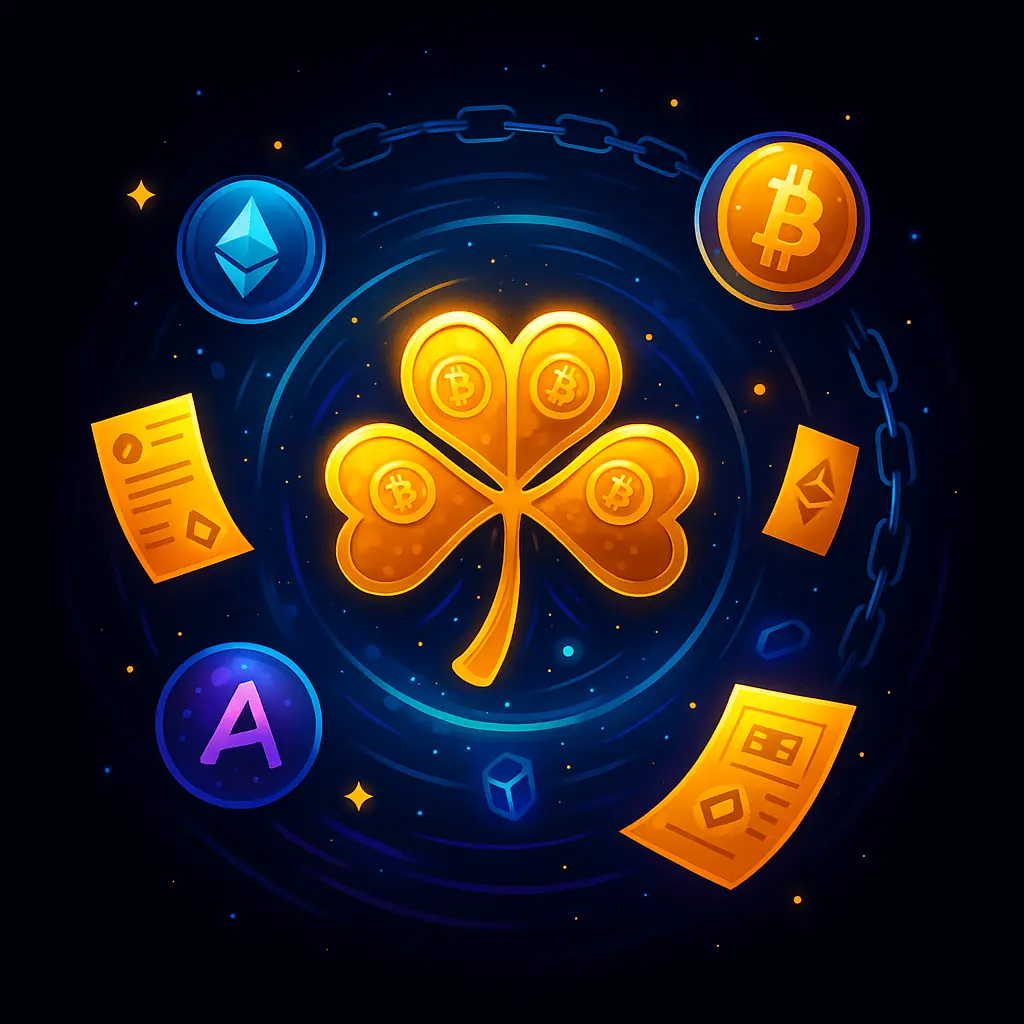Who hasn’t dreamed of hitting the jackpot? Lotteries have been around for centuries, from national draws to scratch cards at your local shop. But now a new wave is here: Web3 lotteries.
These aren’t just digital versions of old games. They’re lotteries that run on blockchain rails — with provably fair draws, instant payouts, and global access.
Let’s break down what Web3 lotteries are, how they work, and why they’re becoming one of the most popular on-chain gambling formats.
What Is a Web3 Lottery?
A Web3 lottery is a lottery game built on blockchain. Instead of buying tickets from a national operator or centralized app, you:
- Buy tickets using crypto.
- Ticket ownership is recorded on-chain.
- The draw uses provably fair randomness (often oracles like Chainlink VRF).
- Payouts go directly to winners’ wallets.
In short: no middlemen, no waiting weeks, no “trust us.” The code handles it.
Real Examples
- PoolTogether → A “no-loss lottery” on Ethereum. You deposit stablecoins, they’re pooled and earn DeFi yield. Random winners get the interest, but no one loses their deposit.
- Punk Lottery (Polygon) → Community-run NFT prize draws using on-chain randomness.
- Rollbit Lotteries → Hybrid Web3 casino lotteries tied to jackpots and token raffles.
- Fairspin & BetFury → Casinos offering provably fair lottery-style games with crypto tickets.
How Web3 Lotteries Work
- Ticket Purchase → Players buy entries with crypto (ETH, USDT, BNB, etc.). Each ticket is a transaction recorded on-chain.
- Jackpot Pooling → Funds go into a transparent prize pool. Anyone can see the total pot grow.
- Provably Fair Draw → The winner is chosen using cryptographic randomness (e.g., Chainlink VRF). This ensures no manipulation.
- Instant Payouts → Smart contracts send winnings directly to the winner’s wallet. No delays, no approval needed.
This setup makes Web3 lotteries one of the most transparent forms of gambling ever created.
Why Degens Love Web3 Lotteries
- Transparency → Everyone can see the prize pool and the random draw.
- Global access → No national borders. Anyone with internet + wallet can buy a ticket.
- Instant payouts → No waiting for wire transfers. Winners get crypto instantly.
- Innovation → New formats like no-loss lotteries and NFT raffles keep things fresh.
Example: In PoolTogether, over $100M in deposits has gone through its pools, with winners taking home DeFi yield weekly.
How They Differ From Traditional Lotteries
- Centralized vs Decentralized → Traditional lotteries = government or operator-run. Web3 = smart contracts + oracles.
- Transparency → National lotteries don’t show odds or draw mechanics. Web3 = provably fair randomness anyone can verify.
- Speed → Traditional payouts can take weeks. Web3 = instant to your wallet.
- Access → National lotteries block foreigners. Web3 = borderless.
Famous Web3 Lottery Headlines
- PoolTogether lawsuit (2022) → Critics called it an “illegal lottery,” but the community crowdfunded legal defense and kept the platform alive.
- Rollbit raffles → Became legendary in crypto Twitter circles for turning degen bets into life-changing jackpots.
- NFT lotteries → Communities raffle NFTs (like BAYCs or Punks), creating buzz and secondary markets.
The Risks
Not all Web3 lotteries are sunshine and wagmi. Risks include:
- Rug pulls → Fake lotteries collect ticket sales, then vanish.
- Bad RNG → If not using a verifiable oracle, results can be rigged.
- Regulation → Many governments classify lotteries as gambling. Web3 doesn’t always avoid legal risk.
- Volatility → Win in ETH, but the price dumps 20% overnight.
That’s why you should only play on trusted, audited platforms.
Numbers That Show the Growth
- Global online lottery market = $14B+ in 2024 (Statista).
- PoolTogether alone has processed over $100M in deposits.
- Web3 casinos like Rollbit and BetFury have logged billions in lottery-style jackpots.
It’s still small compared to state lotteries, but growth is rapid.
Future of Web3 Lotteries
- No-loss formats → More DeFi + lottery hybrids like PoolTogether.
- NFT integrations → NFT raffles and collectibles as prizes.
- DAO-run lotteries → Community-owned jackpots where players govern prize rules.
- Cross-chain pools → Lotteries spanning ETH, BNB, Polygon, Solana.
With account abstraction, players will be able to buy tickets with email logins and debit cards — while still using blockchain rails behind the scenes. That’s when Web3 lotteries could go mainstream.
How to Spot a Safe Web3 Lottery
- Check if randomness uses a trusted oracle (Chainlink VRF is the standard).
- Look for audit reports from real security firms.
- Verify ticket purchases and prize pools are visible on-chain.
- Avoid platforms with anonymous teams + no history.
👉 Golden rule: if you can’t verify the draw, don’t play.
Final Word
So, what are Web3 lotteries? They’re the next generation of luck games — jackpots and raffles rebuilt on blockchain with provable fairness, instant payouts, and borderless access.
They’re not risk-free. Rug pulls, shady RNG, and regulation are all real concerns. But compared to traditional lotteries, Web3 lotteries give players more transparency and more control.
For casual players, they’re fun and fair. For degens, they’re another shot at wife-changing money with on-chain receipts.
And the best part? In Web3, everyone can watch the pot grow live — and maybe, just maybe, the next winning wallet will be yours.
Wagmi 🚀🍀


